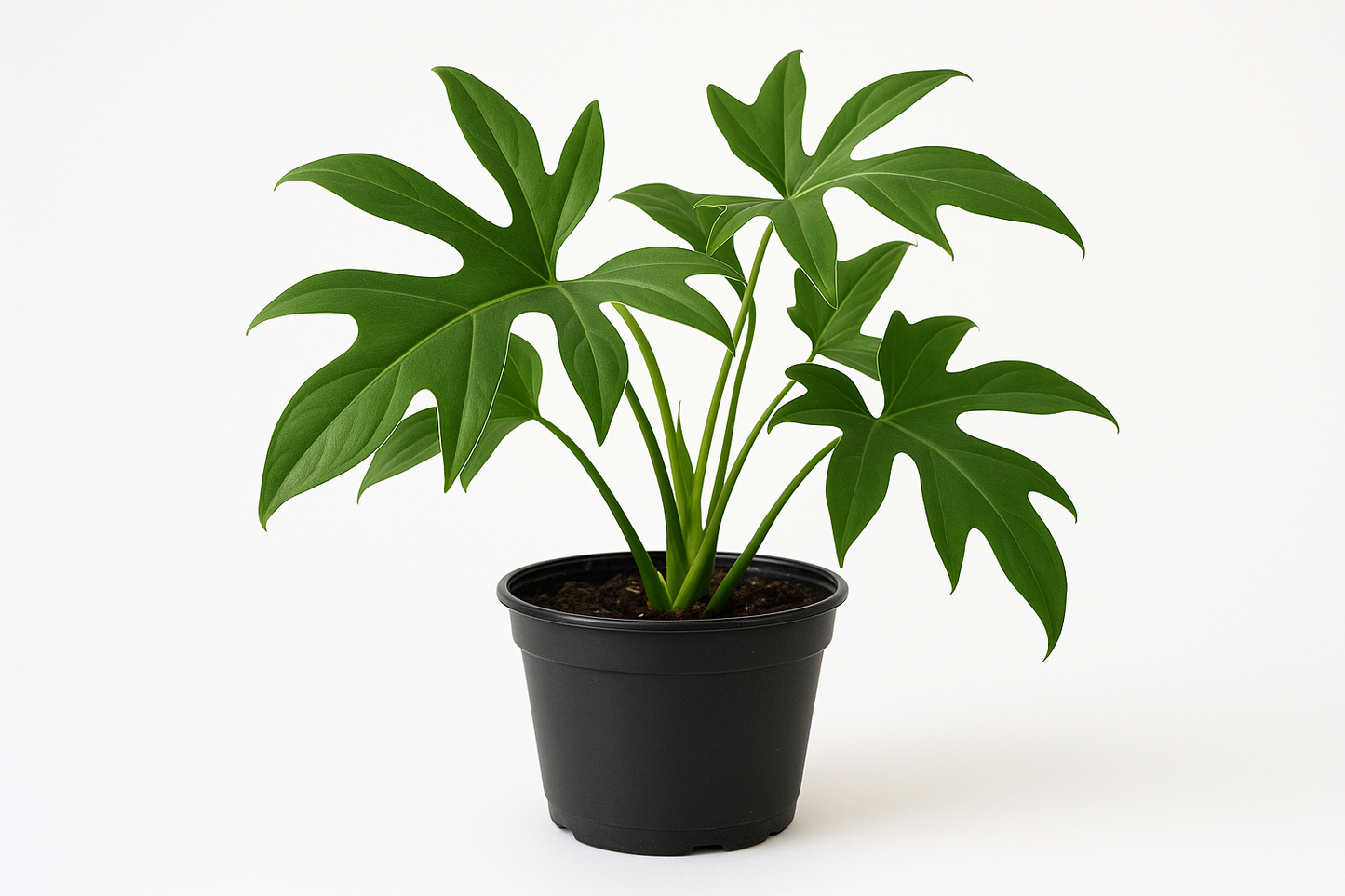Eden on Earth
10” Philodendron Horse Head
10” Philodendron Horse Head
Couldn't load pickup availability
The Ultimate Guide to Philodendron 'Horse Head' Care
The Philodendron 'Horse Head' (Philodendron bipennifolium) is a captivating vining plant, earning its name from the unique, horse-head shape of its mature leaves. This guide will walk you through everything you need to know to help this unique aroid flourish in your home.
1. Understanding Your Plant
-
Scientific Name: Philodendron bipennifolium
-
Origin: Native to the tropical rainforests of South America, particularly Brazil. This tropical origin is the key to its care, as it desires warmth, high humidity, and dappled light reminiscent of the rainforest floor.
-
Growth Habit: This is a hemiepiphyte, meaning it starts on the forest floor and climbs up trees. In your home, it is a vigorous climber that will thrive with a moss pole or trellis. Providing support encourages the leaves to grow larger and develop their signature shape.
2. Core Care Requirements
💡 Light
-
Ideal: Bright, indirect light is perfect. An east-facing window that gets gentle morning sun or a spot a few feet from a bright south or west-facing window is ideal.
-
Too Little: Insufficient light will lead to slower growth, smaller leaves, and a "leggy" appearance, where the stems are long and stretched with few leaves.
-
Too Much: Direct sunlight will scorch the delicate leaves, causing yellowing or brown, crispy spots.
💧 Watering
-
When to Water: Water when the top 1-2 inches of the soil are dry. The best method is to test it with your finger. This plant is more tolerant of slight underwatering than overwatering.
-
How to Water: Water thoroughly, allowing it to flow from the drainage holes. This ensures all the roots get hydrated. Let the pot drain completely and discard any excess water in the saucer to prevent root rot.
-
Frequency: You will water more frequently during the active growing season (spring/summer) and reduce the frequency during fall and winter.
🌱 Soil
-
Perfect Mix: A well-draining, airy, and chunky aroid mix is essential. You can create an excellent mix by combining:
-
1 part high-quality potting mix
-
1 part orchid bark
-
1 part perlite or pumice
-
A handful of horticultural charcoal (optional, for "sweetening" the soil)
-
-
Why it Works: This blend provides aeration for the roots, retains some moisture without becoming waterlogged, and mimics the rich, loose soil of its native habitat.
🌡️ Temperature & Humidity
-
Temperature: Keep temperatures between 65-85°F (18-29°C). Protect it from temperatures below 55°F (13°C) and sudden drafts from windows or AC units.
-
Humidity: It loves high humidity (60%+). If your home is dry, consider using a humidifier, grouping it with other plants, or placing it on a pebble tray with water.
3. Growth and Maintenance
🌿 Fertilizing
-
What to Use: A balanced liquid fertilizer, diluted to half-strength.
-
How Often: Feed every 4-6 weeks during spring and summer.
-
Important: Stop fertilizing in fall and winter when growth naturally slows.
🧗♀️ Support and Training
-
Benefits: Providing a moss pole is highly beneficial. The aerial roots will grow into the pole, which provides stability and nutrients, signaling the plant to produce larger, more mature leaves.
-
How to Do It: Gently attach the main vine to the pole with plant ties. Keep the moss pole moist by misting it regularly to encourage the roots to attach.
✂️ Pruning
-
Use sterile shears to trim any yellowing or dead leaves. You can prune the vine to encourage a fuller shape or to control its size. Pruning is also a great way to get cuttings for propagation.
🪴 Repotting
-
Repot every 1-2 years or when it becomes root-bound.
-
Signs it's Time: Roots are circling the bottom of the pot or growing out of the drainage holes.
-
Choosing a Pot: Move up to a pot that is only 1-2 inches larger in diameter.
4. Troubleshooting Common Issues
-
Yellow Leaves: Most often caused by overwatering.
-
Brown, Crispy Tips: Usually indicates low humidity.
-
Pests: Watch for spider mites, mealybugs, and thrips. Inspect the undersides of leaves regularly. Treat with neem oil or insecticidal soap if an infestation occurs.
⚠️ A Note on Toxicity
-
This plant is toxic to pets and humans if ingested, causing irritation of the mouth and digestive tract. Keep it away from curious pets and children.


